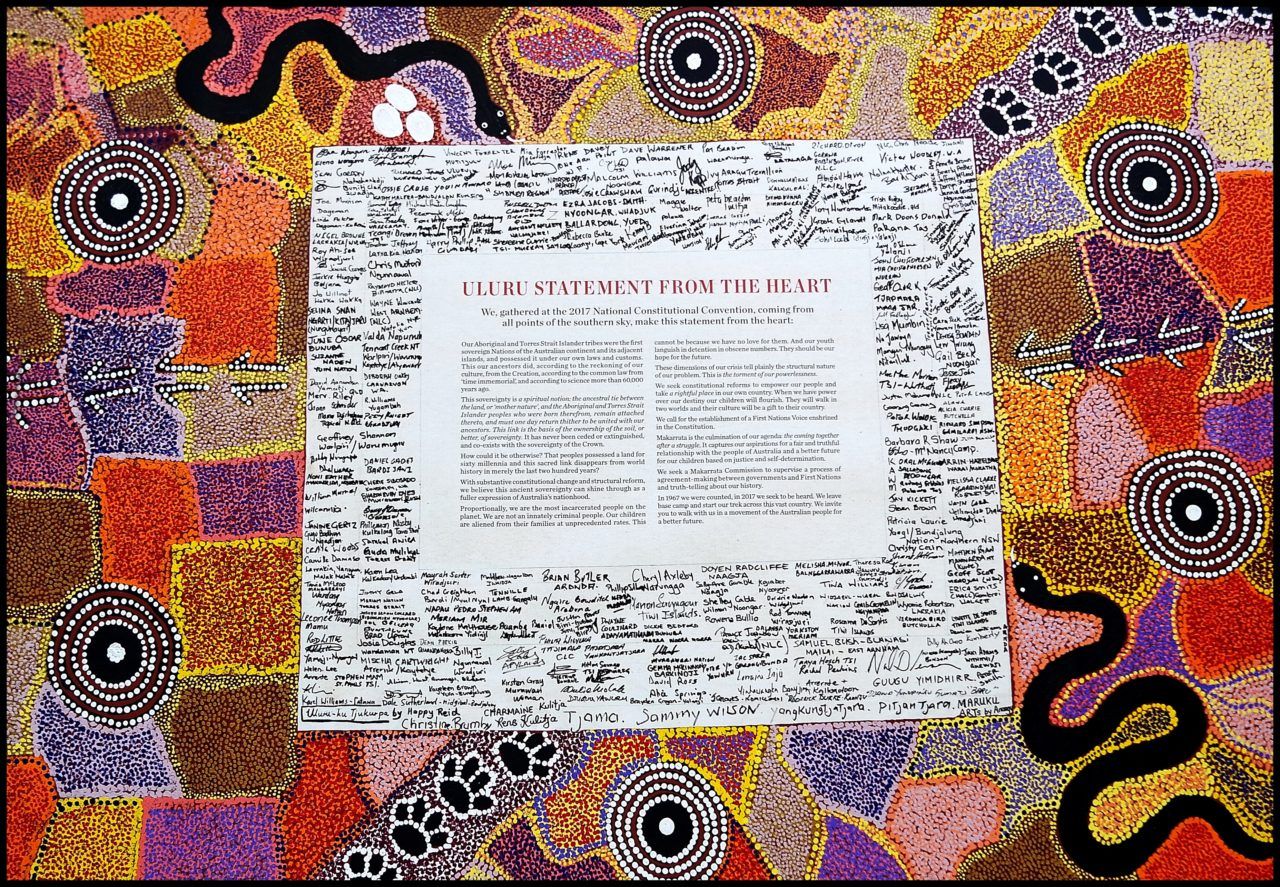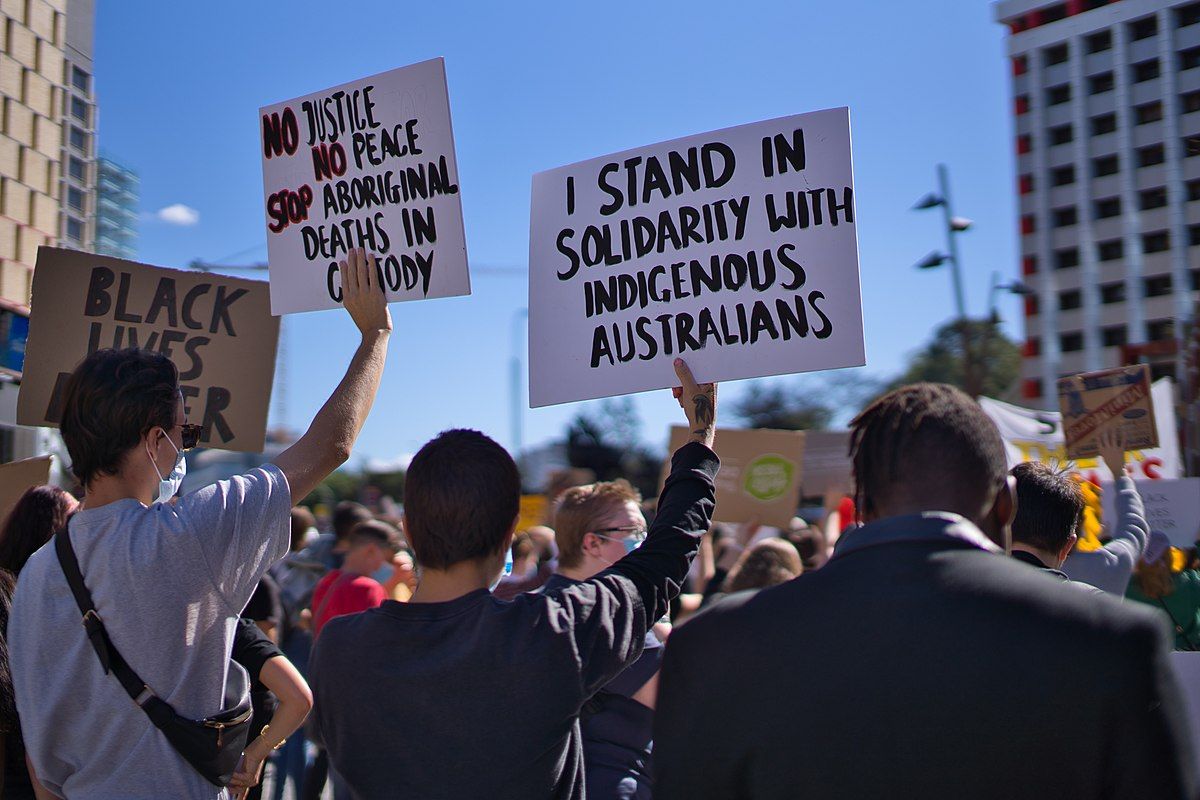Chris Cunneen is a Professor of Criminology at the Jumbunna Institute for Indigenous Education and Research at the University of Technology Sydney. He specializes in Aboriginal and indigenous issues, and he has served on the Stolen Generations Inquiry and the Royal Commission into Aboriginal Deaths in Custody, among other commissions.
On December 29, 2015, a 26-year-old Dunghutti man named David Dungay died in his New South Wales prison cell. Five guards had restrained him after he refused to stop eating a packet of cookies. Security footage showed David saying he could not breathe 12 times before he lost consciousness and died. The state coroner found that the guards should not face any disciplinary action let alone criminal charges. After the findings, David’s mother captured the sense of racial injustice in a few words: “If Aboriginal men held down a white man until he was dead, where do you think those men would be? In jail for life.”
Nearly five years later, Aboriginal activists continue to seek justice on Dungay’s behalf, and Australian cities have seen large scale demonstrations this year coinciding with the Black Lives Matter movement in the United States. These demonstrations have focused on Aboriginal deaths in prison and police custody as well as the continuing problem of police violence. Aboriginal deaths at the hands of law enforcement are a charged issue in Australia. The deaths highlight problems with oppressive policing and high levels of imprisonment. More generally, they are markers of institutional racism within Australian society.
The Historical Context
To understand the modern Aboriginal political movement and its focus on deaths in custody and police violence, it is necessary to go back to the late 1960s. In inner-city Sydney, concern over deaths in police custody, police violence, and racially discriminatory arrests of Aboriginal people led to the establishment of the first Aboriginal Legal Service (ALS). A group of young Black activists took direct action and decided to establish a patrol to observe and collect information on police violence and harassment in the Redfern area. With support from volunteer lawyers in early 1970, the ALS opened its doors as the first shop front legal assistance service in Australia. Gary Foley, one of the activists involved in its establishment, wrote that the ALS served “to create a resurgence of pan-Aboriginal nationalism as a surge of confidence swept through the Aboriginal community.” The model of direct action through Aboriginal community-controlled organisations was expanded to medical services and community housing, and was to subsequently spread across all states and territories in Australia. These organisations born from the struggle against police violence were fundamentally concerned with fighting for Indigenous sovereignty and self-determination.

During the 1980s, there was renewed concern over Aboriginal deaths in police custody. Aboriginal organizations including the ALS and the Committee to Defend Black Rights (CDBR)—along with the families of those who had died in custody—pressured the Australian government domestically and internationally to launch an inquiry. Foreshadowing the language of the Black Lives Matter movement, in August 1987, the chairperson of the CDBR, Yamagee women Helen Boyle, told the United Nations Working Group on Indigenous Populations that:
The Australian Government must implement a federal Royal Commission to inquire into these deaths, to show that it strongly believes that Aboriginal lives are worth the same as the rest of the Australian population […] These deaths of Indigenous people in custody show that our rights are not respected, that racism exists with disastrous effects on our families and that we cannot trust Australia’s justice system.
In the weeks following Helen Boyle’s address in Geneva, the Australian government announced the Royal Commission into Aboriginal Deaths In Custody (RCADIC). The Commission investigated 99 Aboriginal deaths and made 339 recommendations after reporting back in 1991. However, nobody was charged with a criminal offense arising from these deaths, although the Commission did recommend that the prosecution should consider criminal charges in some of the matters.
In its discussion on policing, the Commission wrote, “One of the most important findings of the Commission has been to identify very clearly that the racism under which Aboriginal people labour is institutionalized and systemic.” The Commission found that many deaths in custody were preventable and avoidable had the custodial authorities exercised a proper duty of care. Custodial authorities failed to adequately attend to their responsibilities such as checking cells regularly, ensuring prescribed medicines were available, and facilitating proper medical treatment.
Current Problems
Thirty years later, failures in providing humane treatment continue to lead to deaths in custody while institutional racism continues to plague the justice system. Aboriginal imprisonment rates have more than doubled since the early 1990s, and there have been more than 437 deaths in custody in the intervening years. There have been no criminal convictions relating to any of these deaths, even in cases where direct violence was involved. “I can’t breathe” is an individual’s cry for help, but it is also a collective expression of suffocation and rebellion against the lack of change.
In addition to inhumane treatment of those in custody, there have been several police fatal shootings of Aboriginal men and women over the last 12 months, including that of 29-year-old Joyce Clarke in Geraldton, Western Australia. Clarke was shot and killed in front of her home after family had called police for assistance in transferring her to hospital. A police officer has been charged with murder. In Yuendumu, Northern Territory, 19-year-old Kumunjayi Walker was shot and killed by police in his home. A police officer was also charged with murder in this case and released on bail. Both of these deaths led to national protests. Neither of the criminal cases against police have been determined, nor have the coroners reported on the cause of death. In contrast, charging police with murder in the instances of Aboriginal deaths in custody is rare, with only two previous cases in the last 40 years (neither case had a conviction).
An investigation of an Aboriginal death earlier this year outside of the criminal justice system starkly raised the broader issue of systemic racism, this time in the healthcare system. Even though 27-year-old Naomi Williams had been to the hospital 18 times for prenatal care, she had never received a proper diagnosis, treatment, or referral to a specialist from her local rural hospital. She was six months pregnant when she died, along with her unborn baby, of septicaemia. Williams’ case clearly showed that racially discriminatory treatment in hospitals can lead to death in circumstances which are preventable with earlier, appropriate intervention. Even before Williams’ death, Aboriginal people living in the area complained of racist treatment at the hospital, yet this case only demonstrates the well-documented poor health outcomes for Aboriginal people across the country. Aboriginal life expectancy is nine years less than that of non-Aboriginal people. Australia is a wealthy country ranking third internationally, behind Norway and Switzerland, on the United Nations Human Development Index (HDI). However, the HDI ranking for Aboriginal people within Australia is similar to that of El Salvador.
Compounding these discrepancies, Aboriginal people in Australia are among the most imprisoned people in the world. In 2017, Australia reached the point where Indigenous imprisonment rates within Australia outstripped those of Black Americans in the United States. Aboriginal people are slightly more than 3 percent of the Australian population but comprise 28 percent of the adult prison population and over 50 percent of juvenile detainees. In this context, it is hardly surprising that Black Lives Matter strongly resonates within this country. The history of the nation since the time of colonization has consistently shown that Black lives do not matter. Policing in Australia was at the forefront of the murder of Aboriginal people during the period of direct dispossession of land, whether directly through punitive expeditions resulting in large scale massacres or through the protection of settlers who engaged in their own forms of violent control. The last recorded massacre of Aboriginal people by a punitive force of police and special constables occurred in the Northern Territory in the late 1920s. Police also played a role in enforcing the racially discriminatory legislation existent through much of the twentieth century, which sought to control all aspects of Aboriginal lives including residence, employment, marriage, segregation and so forth. These policies also resulted in the large-scale removal of Aboriginal children from their families. This history assists in explaining the deep suspicion surrounding any death of an Aboriginal person in police or prison custody.
Looking Towards the Future
Like the Aboriginal activists of the 1960s, today’s rebellion is not merely a negative protest against police and the excessive and unjust use of criminalisation and imprisonment. Today’s protests are about advocacy, change, and building Indigenous-led alternatives. It is clear that Aboriginal people are tired of the endless promises of reforming the justice system, including better police training on cultural awareness, implicit bias, and the use of force. They have had thirty years of these promises, and people still die in custody precisely under the same type of circumstances they did when the Royal Commission was investigating deaths during the 1980s. Aboriginal communities are demanding their own visions of community safety and security.

At a broader level, these challenges are also about sovereignty and Aboriginal self-determination. Indigenous claims of sovereignty remain as strong as ever in Australia and cast a deep shadow over the state’s claim to political legitimacy, including the legitimacy of the police and criminal justice system. In May 2017, an Indigenous constitutional convention was held in Alice Springs which brought together 250 Aboriginal and Torres Strait Islander delegates from across Australia to discuss constitutional change. The convention produced the Uluru Statement, which reaffirmed that Aboriginal sovereignty had never been ceded or extinguished, and co-exists with the sovereignty of the Crown. The Uluru Statement called for the establishment of a First Nations Voice enshrined in the Constitution and a “Makarrata Commission to supervise a process of agreement-making between governments and First Nations and truth-telling about our history.” Significantly, the title, Uluru Statement, translates into “a statement from the heart.” It is not a dry legal document outlining options for constitutional change. Perhaps the strongest plea from the heart is the following:
Proportionally, we are the most incarcerated people on the planet. We are not an innately criminal people. Our children are alienated from their families at unprecedented rates. This cannot be because we have no love for them. And our youth languish in detention in obscene numbers. They should be our hope for the future. These dimensions of our crisis tell plainly the structural nature of our problem. This is the torment of our powerlessness.
Even though George Floyd’s death has sparked new protests surrounding Aboriginal deaths in custody in Australia, they have not arisen from thin air. Indeed, as the Uluru Statement makes clear, they have arisen from structural problems within Australian society. These grievances are not without history, meaning, or validity, and they must be addressed.




